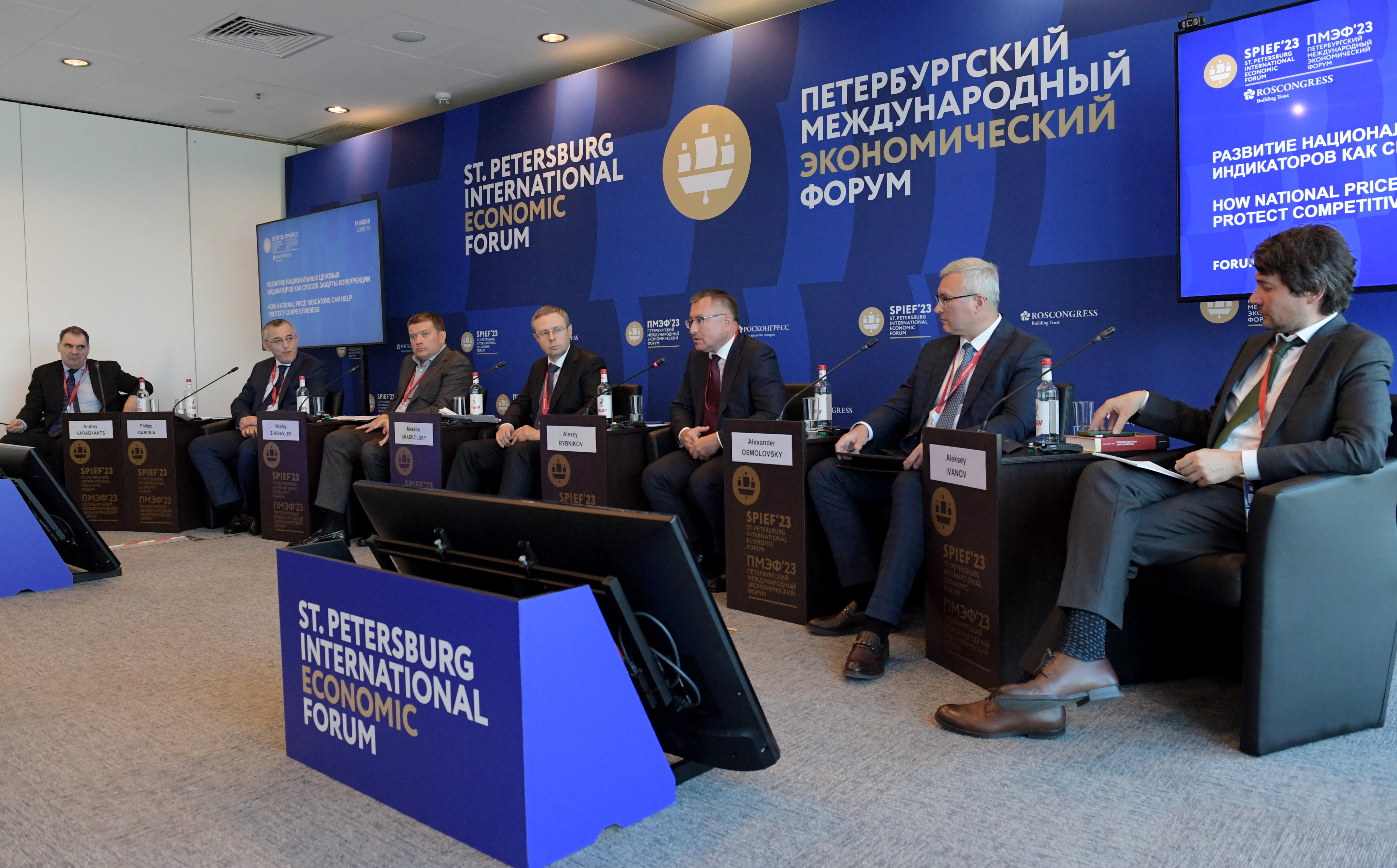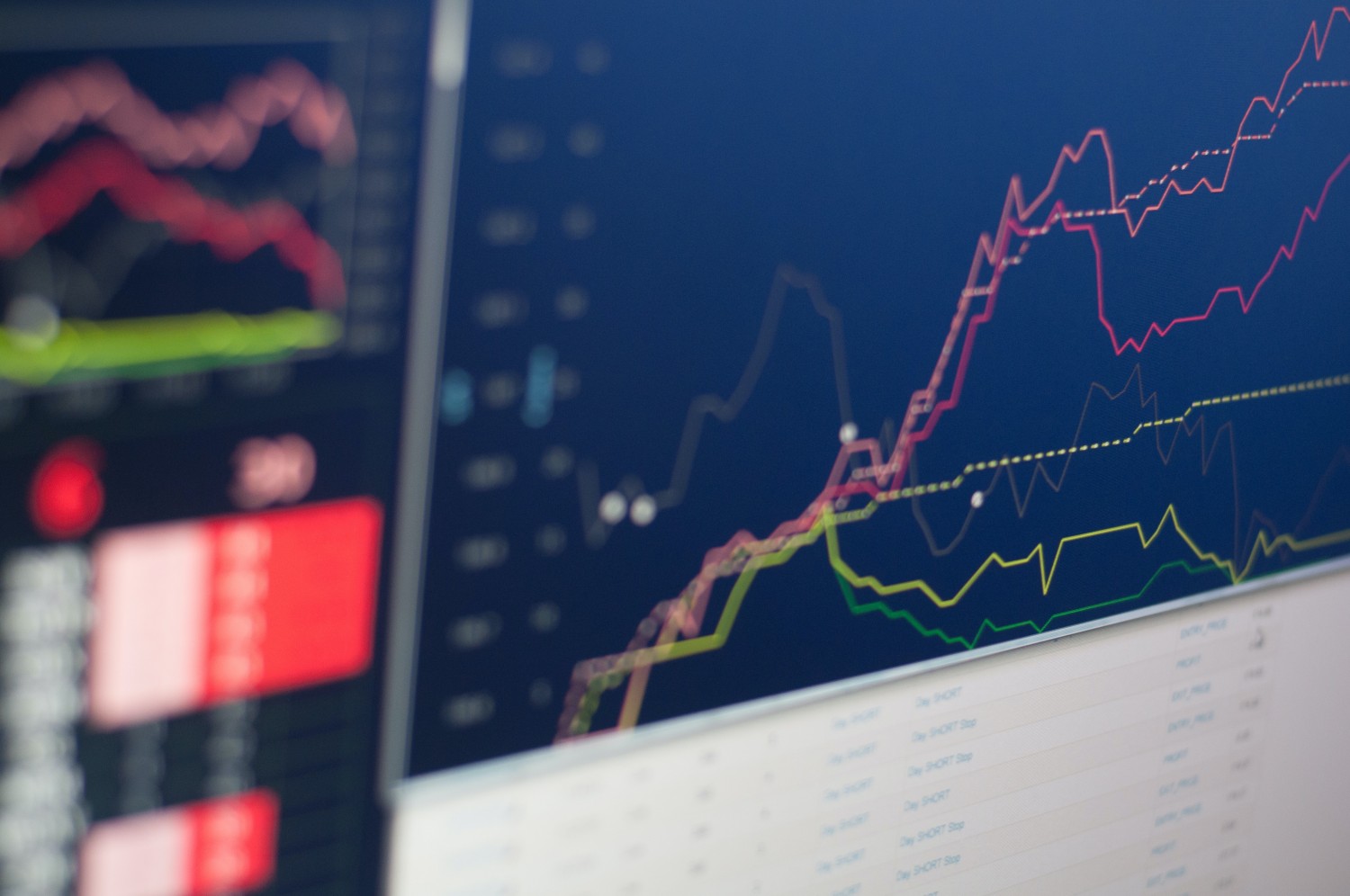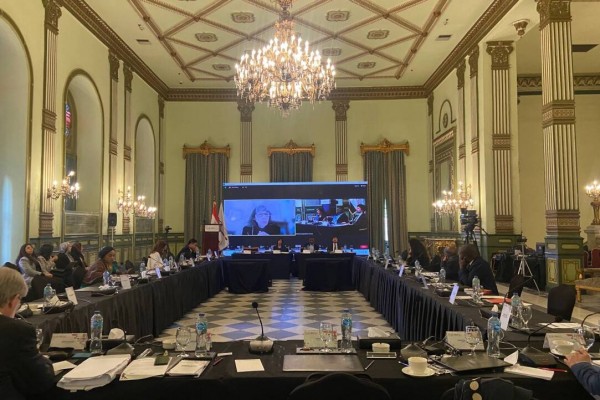The creation of a national system of price indicators under present-day conditions is one of the key objectives aimed at ensuring economic growth and overcoming the barriers that hinder the development of the Russian economy. On June 16, experts discussed the peculiarities of this process at the FAS session on development of national price indicators as a way to protect competition within the framework of XXVI SPIEF.
An interdepartmental group is currently being formed to evaluate the indicator (index) of commodity prices. FAS, together with the interested federal executive bodies and the Bank of Russia prepared a draft decree of the Government of Russia on the order of interaction, said the Head of FAS Maxim Shaskolsky.

According to the authority, the creation of a national system of price indicators for the key groups of goods can ensure the stability of pricing. In addition, it will solve certain issues of taxation of Russian companies and improve their position on the market in the current environment. Also, correct quotations for goods will reduce the possibility of distortion or manipulation of prices in order to meet the interests of domestic consumers.
One of the fundamental problems of the market economy is asymmetry of information. The price reporting agencies Argus, Platts, Refinitiv, etc. were created precisely to eliminate asymmetry, to help entrepreneurs. The national system of price indicators should also support the provision of information, said Alexey Ivanov, Director of the International BRICS Competition Law and Policy Centre.

The discussion about price indicators as an instrument of increasing competitiveness rather than as an element of fiscal and customs policy is conducted in the context of export goods. What matters is the competitiveness of the country and its integration into global value chains. For more on the dynamics of competition in global value chains, one can see “Global Food Value Chains and Competition Law“ (Cambridge University Press, 2022), written in collaboration with experts from the BRICS Centre.
In particular, one of the chapters describes the active work of global traders, such as Cargill, ADM, Bunge, in the over-the-counter (OTC) market. Regulators' access to information in such markets is hampered by the close oligopoly that exists there. Given how complicated export supply, interaction and settlement schemes have become today, traders are unlikely to provide information on affiliates and all of their chains in the export market.
In this regard, the BRICS format is of particular relevance. If we take such a commodity as grain, the BRICS includes both consumers (China, Egypt, which has applied for BRICS membership) and major grain producers (Russia, Brazil, India).
"Within BRICS we could build a system of both analytical information and exchange trading,”
emphasized Alexey Ivanov.

Nikolay Zhuravlev, Deputy Chairman of the Federation Council of the Federal Assembly of the Russian Federation, noted the necessity of creating price agencies in Russia, which are an important element of the financial infrastructure. Also discussed are simplification of trading systems' access to the organized commodities market, improvement of SMEs' accessibility and establishing limits on purchases of certain goods on the exchange in order to create a system of price indicators. First of all, it concerns strategic commodities that ensure social stability, energy and food security.

Alexey Rybnikov, President, Saint Petersburg International Mercantile Exchange, said that the domestic price indicator for Russian oil exports may start working in a couple of months. So far, its calculations are in test mode. As for price agencies, they can be useful because there are also poorly standardized commodities and the services sector, which neither exchanges nor the system of registration of over-the-counter transactions cover, and this price information is also of considerable interest.
"The transportation market, the rail car rental market, etc. are sectors with low liquidity, there are not many transactions in them, information cannot be collected electronically, you have to talk to people and use the methods of price agencies.”

Philipp Gabunia, Deputy Chairman, Central Bank of the Russian Federation (Bank of Russia), reminded that in addition to oil and oil products, a national indicator for grain is already working, and in June indicators for sugar and sunflower oil were approved.
"It is important that this indicator causes confidence. If the government uses it for internal purposes, it should be clear that it is calculated in an understandable way, based on normal data and the price is formed according to market principles."

Chairman of the Board, Belarusian Universal Commodity Exchange, Alexander Osmolovsky noted that after the sanctions were imposed against the Republic of Belarus the main side of the Belarusian export of the goods was Russia and Asian countries.
"We are extremely interested in creating our own price indicators in Russia. We have developments that we can share within the framework of the Union State. The Belarusian exchange calculates more than 87 price indicators for various groups of commodities and publishes about 2,000 price values daily on the exchange and over-the-counter markets."
Ricardo Medeiros de Castro, Deputy Chief Economist, Administrative Council for Economic Defense of the Federative Republic of Brazil (CADE), spoke about how price agencies work in Brazil and noted that the main goal of price indicators is to ensure price transparency and benefits to consumers, producers and suppliers.
Maxim Shaskolsky concluded the session by summarizing:
"The Central Bank, the executive and legislative authorities continue to work on the creation of national price indicators. Exchange indicators are already fully compliant with the declared objectives. OTC indicators require fine-tuning of the methodology and additional evaluation. I think that this year we will make significant progress in this direction."
Watch the full video of the session.
The St. Petersburg International Economic Forum (SPIEF) has been held since 1997, and since 2006, it has been held under the auspices of the President of the Russian Federation, who has also attended each event. Over the last 24 years, the Forum has become a leading global platform for members of the business community to meet and discuss the key economic issues facing Russia, emerging markets, and the world as a whole. The 26th SPIEF took place on 14–17 June 2023.
Photo: RIA Mediabank




